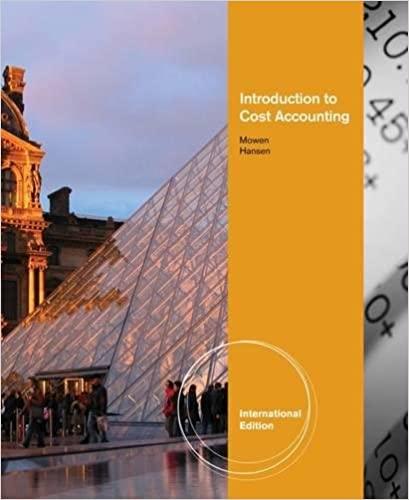Required: 1. Prepare the November adjusting entry for bad debts. 2. Starting in December, ITI switched to using the aging method. At its December 31 year-end, total Accounts Receivable is $89.000, aged as follows: (1) 1 to 30 days old, $75,000 (2) 31 to 90 days old, $10,000, and (3) more than 90 days old. $4,000. The average rate of uncollectibility for each age group is estimated to be (1) 10 percent. (2) 20 percent, and (3) 40 percent, respectively. Prepare a schedule to estimate an appropriate year-end balance for the Allowance for Doubtful Accounts. 3. Before the end-of-year adjusting entry is made the Allowance for Doubtful Accounts has a $1,600 credit balance at December 31 Prepare the December 31 adjusting entry 4. Show how the various accounts related to accounts receivable should be shown on the December 31 balance sheet Complete this question by entering your answers in the tabs below. Required 1 Required 2 Required 3 Required 4 Prepare the November adjusting entry for bad debts. (If no entry is required for a transaction/event, select "No Journal Entry Required" in the first account field.) View transaction list Journal entry worksheet Record the adjusting entry for bad debts as of November 30, Note: Enter debits before credit Innovative Tech Incorporated (ITI) has been using the percentage of credit sales method to estimate bad debts. During November , ITI sold services on account for $100,000 and estimated that 12 of 1 percent of those sales would be uncollectible Required: 1. Prepare the November adjusting entry for bad debts. 2. Starting in December, ITI switched to using the aging method. At its December 31 year-end, total Accounts Receivable is $89.000, aged as follows (1) 1 to 30 days old, $75,000, (2) 31 to 90 days old, $10,000; and (3) more than 90 days old, $4,000. The average rate of uncollectibility for each age group is estimated to be (1) 10 percent . (2) 20 percent, and (3) 40 percent, respectively. Prepare a schedule to estimate an appropriate year-end balance for the Allowance for Doubtful Accounts 3. Before the end-of-year adjusting entry is made, the Allowance for Doubtful Accounts has a $1,600 credit balance at December 31 Prepare the December 31 adjusting entry 4. Show how the various accounts related to accounts receivable should be shown on the December 31 balance sheet. Complete this question by entering your answers in the tabs below. Required 1 Required 2 Required 3 Required 4 Prepare the November adjusting entry for bad debts. (if no entry is required for a transaction/event, select "No Journal Entry Required in the first account field View transaction list Journal entry worksheet 1. Prepare the November adjusting entry for bad debts. 2. Starting in December, ITI switched to using the aging method. At its December 31 year-end, total Accounts Receivable is $89.000, aged as follows (1) 1 to 30 days old, $75,000, (2) 31 to 90 days old, $10.000, and (3) more than 90 days old. $4,000. The average rate of uncollectibility for each age group is estimated to be (1) 10 percent. (2) 20 percent, and (3) 40 percent, respectively. Prepare a schedule to estimate an appropriate year-end balance for the Allowance for Doubtful Accounts. 3. Before the end-of-year adjusting entry is made, the Allowance for Doubtful Accounts has a $1,600 credit balance at December 31 Prepare the December 31 adjusting entry 4. Show how the various accounts related to accounts receivable should be shown on the December 31 balance sheet Complete this question by entering your answers in the tabs below. Required 1 Required 2 Reqlired 3 Required 4 Before the end-of-year adjusting entry is made, the Allowance for Doubtful Accounts has a $1,600 credit balance at December 31. Prepare the December 31 adjusting entry. (If no entry is required for a transaction/event, select "No Journal Entry Required in the first account field.) View transaction list Journal entry worksheet Record the adjusting entry for bad debts as of December 31 Note: Enter debits before di Date December 31 General Journal Debit Credit 1. Prepare the November adjusting entry for bad debts. 2. Starting in December, ITI switched to using the aging method. At its December 31 year-end, total Accounts Receivable is $89,000 aged as follows (1) 1to 30 days old, $75,000 (2) 31 to 90 days old, $10,000, and (3) more than 90 days old $4,000. The average rate of uncollectibility for each age group is estimated to be (1) 10 percent, (2) 20 percent, and (3) 40 percent, respectively. Prepare a schedule to estimate an appropriate year end balance for the Allowance for Doubtful Accounts 3. Before the end-of-year adjusting entry is made, the Allowance for Doubtful Accounts has a $1,600 credit balance at December 31 Prepare the December 31 adjusting entry 4. Show how the various accounts related to accounts receivable should be shown on the December 31 balance sheet Complete this question by entering your answers in the tabs below. Required 1 Required 2 Required 3 Repuired 4 Show how the various accounts related to accounts receivable should be shown on the December 31 balance sheet. Innovative Tech Incorporated (1) Balance Sheet(partial) At December 31











